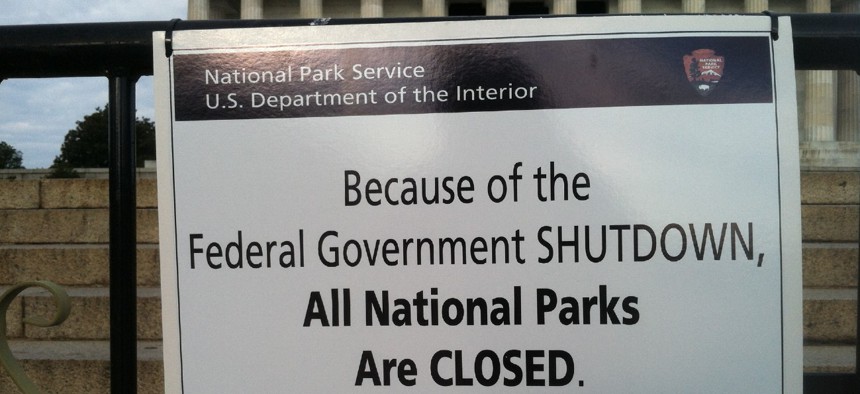
National Parks Conservation Association
What Federal Employees Should Know About Their Pay If There Is a Shutdown at the End of This Month
Unlike previous closures, furloughed workers would be guaranteed retroactive compensation once government reopens.
The odds of a government shutdown next month increased with the House’s passage Tuesday of a measure that links stopgap spending to keep federal agencies open past Sept. 30 to suspending the U.S. debt limit. Republicans in the Senate support language that would keep agencies open and funded at their current level through Dec.3, but will not back the portion of the measure that would suspend the debt limit through December 2022. If the package gets derailed in the Senate, the House would have to start the process over again with the Oct. 1 deadline to avert a shutdown looming.
While a shutdown would not be a good outcome for either the citizens government serves or federal employees themselves, there would be one key difference this time with regard to pay: all federal employees—even those furloughed during the closures—would be guaranteed back pay once operations resumed. This guarantee was written into the law that granted furloughed workers retroactive compensation following the 35-day partial shutdown in December 2018-January 2019.
In the past, only employees who were considered essential and had to work while agencies were shuttered were guaranteed pay after the government reopened. Others had to wait each time for Congress to pass a measure granting them back pay.
Under the new rules employees would still need to wait for the shutdown to end to collect their pay, meaning they could go several weeks without a paycheck depending on how long the closures lasted. A Jan. 23, 2019 Office of Personnel Management memo implementing the retroactive pay law said employees will need to be paid at their standard rates “as soon as possible after the lapse in appropriations ends, regardless of scheduled pay dates.”
The guidance also noted that agencies may not try to count time employees spent in furlough status against their vacation time. “In providing retroactive pay for furlough hours, employees may not be charged paid leave (e.g., annual leave and sick leave) or other paid time off (e.g., compensatory time off in lieu of overtime, for travel, or for religious purposes; credit hours under a flexible work schedule),” the memo stated. “All paid leave and other paid time off was automatically cancelled because of the lapse in appropriations. There is no legal authority to revoke those cancellations and charge employees for paid leave or other paid time off.”
For a guide to how other benefits such as health insurance would likely be affected during a shutdown, click here.
Telework After the Pandemic
The Merit Systems Protection Board is looking ahead to how agencies can maintain effective telework policies after the pandemic has ended. Policies will look different for every agency and for different jobs within an organization, but MSPB in its September newsletter suggested that supervisors think about how they can sharpen their performance management skills to make fair decisions regardless of whether an employee is working from home or the office. For their part, employees should think about their work habits and routines, MSPB said. “Not all employees or jobs are suitable for telework,” the newsletter stated. “Employees who telework should maintain their performance and fully engage with their supervisors, coworkers, customers, and other relevant parties.”
In general telework has a lot of benefits for both agencies and employees, MSPB noted, including allowing continuity of operations in emergencies, requiring less office space, and easing recruitment and retention. For employees the arrangement can help with work-life balance, reduce time and money spent commuting, and leave them more engaged at work.
“The use of post-pandemic telework may increase in federal organizations based on the experience they gained with this workplace flexibility during the pandemic,” MSPB concluded. “To determine what level of telework is appropriate, those organizations should carefully review data regarding such things as organizational productivity and employee attitudes during the period of maximum telework. Such important considerations should not be left solely to individual desires or beliefs that office productivity automatically improves when more employees are physically in the work space.”
(Image via Flickr user National Parks Conservation Association)
NEXT STORY: Four Rules for Picking a Retirement Date







